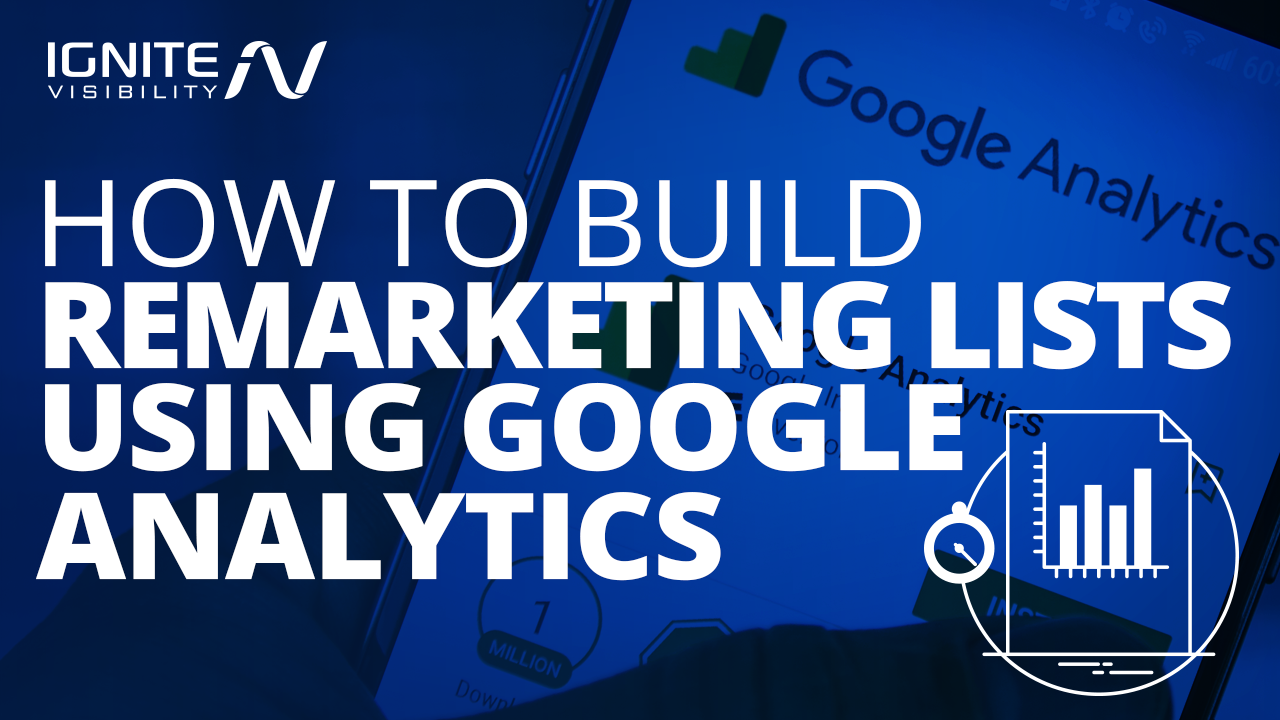Maximizing Your Campaigns with Remarketing In Google Analytics
Wiki Article
Utilizing Remarketing in Google Analytics: A Comprehensive Guide
Utilizing remarketing in Google Analytics uses companies a strategic side in getting to out to prospective clients. This overview will lose light on the necessary actions included in harnessing the full potential of remarketing in Google Analytics, leading to boosted advertising end results.Understanding Remarketing in Google Analytics
Remarketing in Google Analytics enables services to tactically target customers who have actually formerly connected with their web site or mobile application. By leveraging information from Google Analytics, companies can create personalized remarketing lists based on user behavior, such as web pages visited, actions taken, or specific objectives accomplished. This powerful tool makes it possible for organizations to re-engage with individuals that have actually revealed rate of interest in their solutions or products, eventually raising the chance of conversion.Comprehending the different kinds of remarketing methods is critical for an effective campaign - What Is “Remarketing” In Google Analytics?. Google Analytics uses different options, including basic remarketing, vibrant remarketing, and remarketing listings for search advertisements (RLSA) Each kind offers an unique purpose and can be tailored to meet certain marketing goals
Additionally, assessing the performance of remarketing campaigns is crucial for maximizing outcomes. Google Analytics offers useful insights right into the effectiveness of various remarketing methods, permitting organizations to make data-driven decisions and refine their targeting method. By constantly monitoring and changing remarketing efforts based on analytics information, services can make the most of ROI and drive success in their advertising and marketing efforts.
Setting Up Remarketing Campaigns
After setting up audience listings, the next step is to connect Google Analytics with Google Advertisements. By connecting these two platforms, businesses can perfectly transfer audience checklists from Google Analytics to Google Advertisements for remarketing purposes. This assimilation permits even more exact targeting and much better campaign performance.
When the accounts are linked, companies can create remarketing projects in Google Ads using the audience details formerly defined in Google Analytics. These projects can be customized with particular ad creatives, messaging, and bidding techniques to properly re-engage with previous site visitors and drive conversions. By complying with these actions, services can leverage the power of remarketing to improve their marketing efforts and raise ROI.
Making Use Of Target Market Segmentation Approaches

Predefined segments in Google Analytics allow you to quickly evaluate usual audience categories like new users, returning users, or individuals who finished a specific objective on your site. Personalized sectors, on the other hand, allow you to produce unique sections based on click this site certain criteria that are essential to your organization goals. Dynamic remarketing listings automatically change based upon user habits, revealing personalized ads to individuals who have actually engaged with your site specifically means.
Studying Remarketing Efficiency Metrics
Upon reviewing the efficiency of remarketing campaigns in Google Analytics, the analysis of vital efficiency metrics gives valuable insights right into audience engagement and conversion prices. By delving right into metrics such as click-through rates (CTR), conversion rates, expense per procurement (CPA), and return on ad spend (ROAS), online marketers can gauge the success of their remarketing initiatives. Assessing these metrics allows online marketers to maximize projects, fine-tune audience targeting, and designate spending plans efficiently to improve general remarketing performance.Optimizing Remarketing Techniques
When refining remarketing methods in Google Analytics, focusing on target market segmentation is critical for achieving campaign success. By separating your target market right into certain segments based upon their habits, demographics, or rate of interests, you can tailor your advertisements more successfully to every group. This targeted method raises the likelihood of involving users that have actually currently shown interest in your product and services, causing higher conversion rates.An additional crucial facet of optimizing remarketing approaches is continually testing and refining your campaigns (What Is “Remarketing” In Google Analytics?). A/B testing different advertisement creatives, messaging, or deals can aid you recognize what resonates finest with Visit This Link your audience and drives the most conversions. By evaluating the performance of these examinations in Google Analytics, you can make data-driven choices to enhance your remarketing efforts even more
In addition, leveraging dynamic remarketing can dramatically enhance your project results. This feature permits you to reveal customized ads to users based upon their previous interactions with your site, showcasing service or products they have formerly seen. By delivering tailored web content to individuals based on their rate of useful source interests and actions, vibrant remarketing can help increase engagement and drive conversions.
Conclusion
To conclude, using remarketing in Google Analytics is a critical technique to target customers that have actually previously engaged with a website. By producing personalized target market lists and making use of audience segmentation strategies, businesses can maximize remarketing campaigns for raised conversion rates. Analyzing performance metrics and continually maximizing strategies are crucial for maximizing the effectiveness of remarketing efforts.Google Analytics provides various alternatives, including standard remarketing, vibrant remarketing, and remarketing checklists for search advertisements (RLSA)After setting up audience listings, the following step is to connect Google Analytics with Google Ads. By connecting these 2 systems, companies can flawlessly move audience lists from Google Analytics to Google Ads for remarketing objectives.Once the accounts are connected, companies can develop remarketing campaigns in Google Ads using the target market notes formerly specified in Google Analytics.When refining remarketing techniques in Google Analytics, focusing on target market segmentation is critical for attaining project success.
Report this wiki page